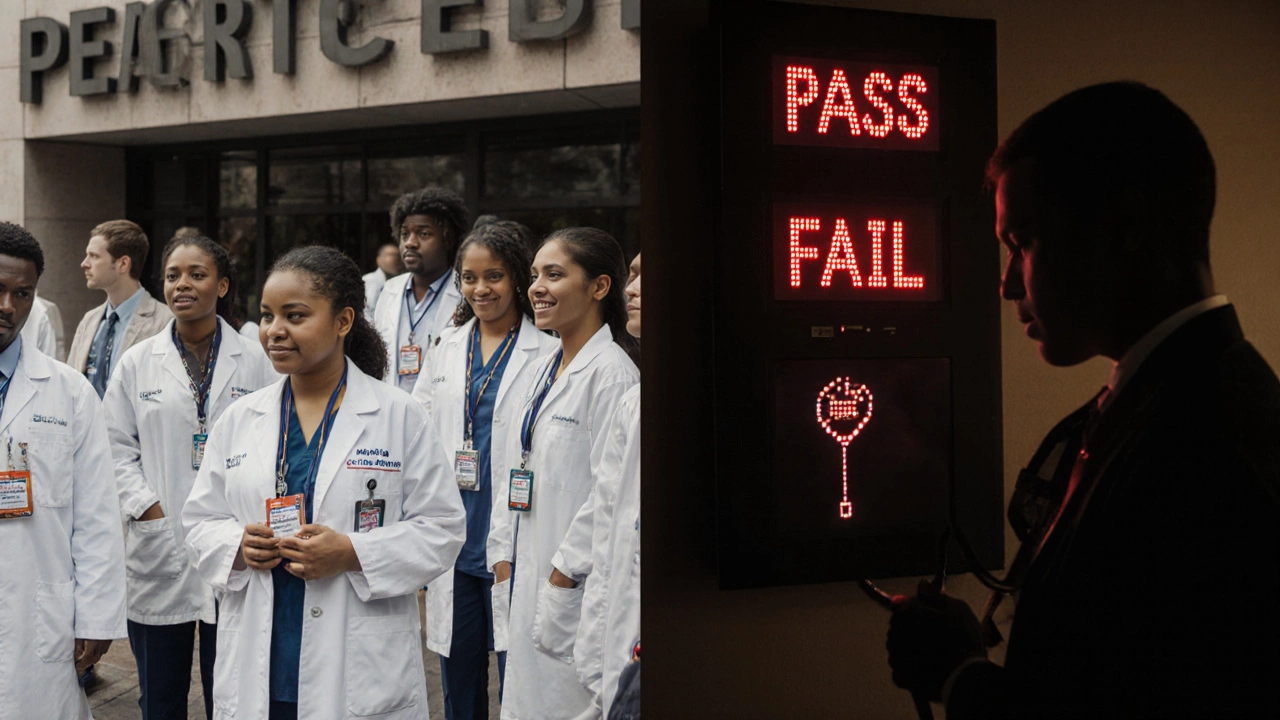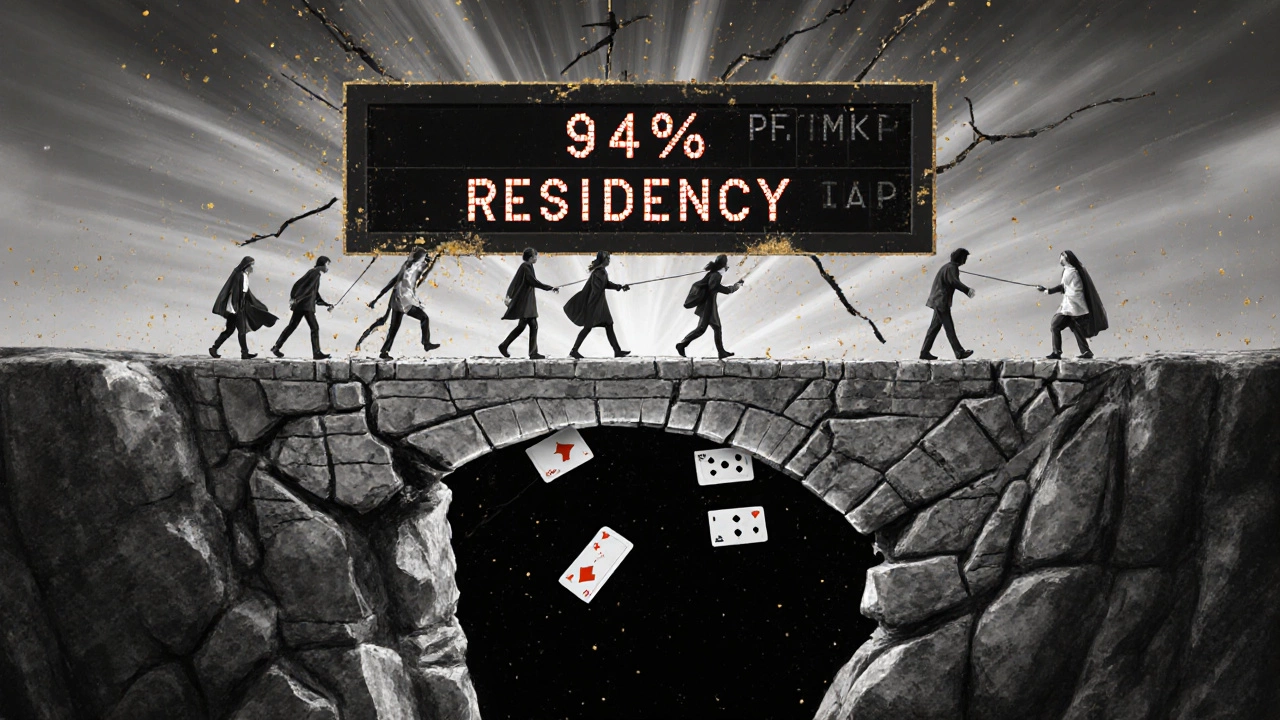USMLE Step 1 Stress Calculator
Your Stress Level
When people ask which exam is the toughest in the USA, they’re not just looking for a name-they want to know what makes one exam harder than the rest. It’s not about how many questions there are or how long it takes. It’s about the pressure, the stakes, the hours of preparation, and what happens if you fail. For some, it’s medical school. For others, it’s law or accounting. But one exam stands out not just because of its difficulty, but because it breaks people before it builds them: the USMLE Step 1.
Why USMLE Step 1 Is Considered the Toughest
The United States Medical Licensing Examination (USMLE) Step 1 is a one-day, 7-hour test that medical students take after their second year of med school. It covers everything from anatomy and biochemistry to pharmacology and behavioral sciences. You’re not just memorizing facts-you’re expected to apply them to real clinical scenarios. One wrong assumption can cost you the entire question.
For years, Step 1 was scored on a 3-digit scale, with scores above 240 considered competitive for top residency programs. That meant students spent 6 to 12 months studying full-time, often sacrificing sleep, social life, and mental health. In 2022, the exam switched to pass/fail, but that didn’t make it easier. It made it more stressful. Now, instead of aiming for a high score, students are terrified of failing. And failing means delaying graduation, losing residency spots, or even quitting medicine altogether.
Pass rates hover around 94%, but that number hides the truth: 6% of students-many of them international graduates or those from underfunded schools-don’t pass on the first try. And retaking it costs thousands of dollars and months of lost time. There’s no second chance to get it right the first time.
How It Compares to Other High-Stakes Exams
Let’s put it in context. The MCAT, the medical school entrance exam, is brutal. It’s 7.5 hours long, covers five subjects, and requires deep critical thinking. But students take it before they’ve even seen a patient. Step 1 comes after years of clinical rotations. You’re not just testing knowledge-you’re testing whether you can think like a doctor under pressure.
The Bar Exam is another contender. Aspiring lawyers spend weeks cramming seven subjects, writing essays, and answering multiple-choice questions. In states like California, the pass rate can dip below 40%. But the Bar is taken after law school. Step 1 is taken in the middle of medical training, when students are still learning how to talk to patients, read EKGs, and handle emergencies. The mental load is heavier.
The CPA Exam is no joke either. Four sections, 16 hours total, with a national pass rate of about 50%. But it’s a professional certification, not a gatekeeper to your career. You can still work as an accountant without passing it immediately. Not so with Step 1. Fail it, and your entire medical career stalls.
The Human Cost
Medical students don’t just study for Step 1-they live it. One student in Texas told me he studied 14 hours a day for 9 months. He didn’t leave his apartment for weeks. He lost 20 pounds. His girlfriend left him. He cried after every practice test. He passed on his third try.
There are no official statistics on suicide rates tied to Step 1, but multiple studies show a sharp rise in depression and anxiety among med students during Step 1 prep. A 2023 survey by the American Medical Association found that 47% of students reported symptoms of burnout during Step 1 preparation. One in five considered quitting medicine.
And it’s not just the exam. It’s the system. Medical schools push students to treat Step 1 like a life-or-death event. Residency programs still look at pass/fail results as a proxy for intelligence. Some even ask for “Step 1 percentile estimates” in applications, despite the change to pass/fail. The pressure doesn’t go away-it just gets quieter.

What About Other Tough Exams?
It’s fair to say other exams are hard. The GRE for PhD programs? Long, tedious, and often irrelevant to your field. The CFA Level I? 6 hours of finance jargon, with a pass rate under 40%. The FE Exam for engineers? 110 questions in 5.5 hours, covering everything from thermodynamics to ethics.
But none of these come with the same weight. Failing the GRE doesn’t mean you can’t become a scientist. Failing the CFA doesn’t mean you can’t work in finance. But failing Step 1? It can end your dream of becoming a doctor.
Even the SAT, once called the most stressful test in America, is a single-day snapshot. Step 1 is the culmination of years of sacrifice. It’s not just a test-it’s a rite of passage.
What’s Changing?
The shift to pass/fail was supposed to reduce stress. And in some ways, it has. More students are taking time off between med school and Step 1 to rest. Some schools have cut back on Step 1-focused curricula. But the culture hasn’t caught up.
Residency programs still use Step 1 scores from past years to filter applicants. Many still ask: “Did you pass on the first try?” That question alone keeps the fear alive. And until that changes, Step 1 will remain the most terrifying exam in the country-not because it’s the hardest to answer questions on, but because so much of your future depends on it.

Can You Beat It?
Yes. Thousands do every year. But beating it isn’t about memorizing more flashcards. It’s about strategy. The top scorers don’t study longer-they study smarter. They use UWorld for practice questions, Anki for spaced repetition, and First Aid for quick reviews. They take full-length practice exams under timed conditions. They sleep. They eat. They talk to counselors.
One student from Ohio passed after failing twice. Her advice? “Stop trying to be perfect. Start trying to be consistent. One question at a time.”
The exam doesn’t care how many hours you put in. It only cares if you know the right answer when it counts.
Final Thought
There’s no official ranking of the toughest exams in America. But if you ask doctors, lawyers, accountants, and engineers which one haunted them the most, the answer will almost always be the same: USMLE Step 1. It’s not just a test. It’s a mirror. It shows you how much you’re willing to give up-and whether that’s enough.
Is the USMLE Step 1 still the hardest exam in the USA even after going pass/fail?
Yes. Even though Step 1 is now pass/fail, it remains the most stressful exam for medical students because it’s a gatekeeper to residency. A failure can delay graduation, hurt job prospects, and force students to reapply to programs. The psychological pressure hasn’t decreased-it’s just changed form. Students now fear failing more than ever because there’s no score to hide behind.
How does the USMLE Step 1 compare to the MCAT?
The MCAT is longer and covers more subjects, but it’s taken before clinical training. Step 1 comes after two years of medical school and clinical rotations. You’re not just recalling facts-you’re applying them to real patient cases. The stakes are higher because Step 1 determines whether you can move forward in your medical career. The MCAT gets you into med school. Step 1 determines if you’ll become a doctor.
Why is the Bar Exam not considered tougher than USMLE Step 1?
The Bar Exam has lower pass rates in some states, but it’s taken after law school. Failing it delays your license, but you can still work as a paralegal or legal assistant. Step 1 is taken mid-medical training. Failing it means you can’t enter residency, which is required to practice medicine. The career consequences are more immediate and severe. Also, Step 1 prep lasts longer and is more intense due to the volume of material and the emotional toll of medical training.
What’s the pass rate for USMLE Step 1?
The overall pass rate for first-time U.S. medical school graduates is around 94%. But for international medical graduates, it drops to about 75%. For those who fail, the second attempt pass rate is only about 60%. Many students take it three or more times, which can cost over $2,000 per attempt and delay their career by a year or more.
How long do students typically study for USMLE Step 1?
Most students spend 6 to 12 weeks studying full-time after their second year of medical school. Some, especially those who’ve failed before or are from lower-ranked schools, study for 4 to 6 months. The average is about 8 weeks of 10- to 12-hour days. That’s over 1,000 hours of focused study-more than most people spend preparing for a college degree.
Can you take USMLE Step 1 more than once?
Yes, but there are strict limits. You can take Step 1 up to six times total. After the first failure, you must wait at least 28 days to retake it. After the third attempt, you must wait six months. Each retake costs $680. Many students face financial and emotional hardship trying to pass, especially if they’ve already invested years and tens of thousands of dollars in medical school.
What Comes After Step 1?
Passing Step 1 doesn’t mean the end of the stress. Next comes Step 2 CK (Clinical Knowledge), then Step 2 CS (Clinical Skills), and finally Step 3. Each one is harder than the last. But Step 1 is the one that breaks you. It’s the first time you realize medicine isn’t just about intelligence-it’s about endurance.
If you’re preparing for it, remember: you’re not alone. Thousands have walked this path. Some broke. Some quit. But most kept going-not because they were the smartest, but because they refused to give up on the people they wanted to help.






